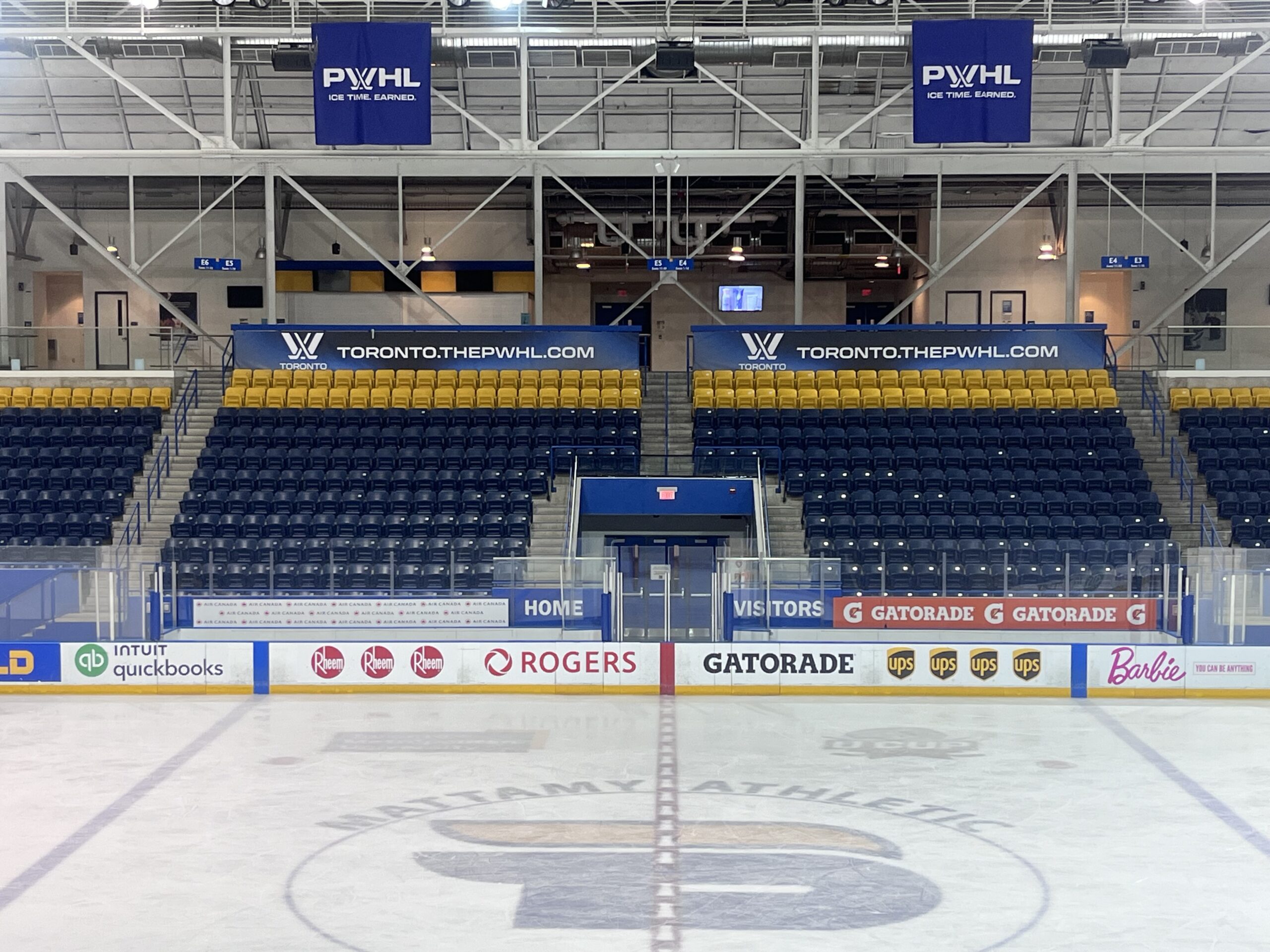
Listen to the whole story here:
The Professional Women’s Hockey League (PWHL) has busted the taboo on bodychecking in women’s hockey and has many predicting the ban on more physical play for women at the university and minor hockey levels isn’t going to last.
The hitting allowed in the PWHL stands in stark contrast to what is allowed at the Ontario University Athletics level, which follows Hockey Canada rules that do not allow bodychecking at any level of women’s hockey. The PWHL allows hitting along the boards but still forbids open-ice hitting. In contrast, men’s hockey at the OUA level allows full body contact similar to the NHL and other professional leagues around the world.
“You will see a trickle down effect probably sooner than later if this is what maintains at the PWHL level. What that timeline looks like is a little bit challenging to say,” said Lisa Haley, head coach of Toronto Metropolitan University’s women’s hockey team. “These are elite athletes and they’re ready for this style of play.”
Haley stopped short, however, of saying the women’s game would benefit from adopting the extreme physicality of the men’s game.
“I don’t know if we want to make men’s hockey the bar and that we want to be like that brand of hockey. There are some advantages to the female game that want to be maintained,” she said. Those advantages include players holding onto the puck for longer stretches of time, which in turn leads to increased playmaking as well as more break-away passes through the middle of the ice because players don’t have to be as worried about being bodychecked.
Some players, however, insist more physical play at women’s OUA games will make the play more exciting and also prepare players for getting hit if they make it to the PWHL.
“I would love to see hitting, it would add so much more elements to the game and even more skill because then you have to dodge the hits and keep your head up,” said Ahalya Julien-Medeiros, a second-year defenceman on the TMU women’s hockey team. “A lot of women don’t keep their head up. So I think it’d be awesome.
“It’s definitely a safety issue…it would be really good to start learning how to take a hit and hit,” she said.
Renata Fast, a defenseman for PWHL Toronto, also predicted the game is going to change for younger players.
“In my opinion, if the PWHL continues on the route of allowing for increased physicality the game will undoubtedly become more physical overtime at the grassroots level,” she said. “There is value in introducing contact and teaching players through minor hockey how to use their body to protect themselves when receiving contact.”
A 2022 study by the University of Calgary’s Sport Injury Prevention Research Centre, however, found that prior experience with bodychecking did not result in greater protection against concussion and injury. It looked at hitting at different age levels and regardless of the shape and size of players, the more experienced body-checkers seemed to be getting injured more often, likely because they are more comfortable with throwing bodychecks and therefore hit more aggressively.
While hitting isn’t allowed at all in girls’ hockey, physical play is introduced for boys in Ontario at age 14 at the competitive rep level, which is considered the age where players have learned the fundamental skills required to function in an environment that allows hitting.
Haley said experts should have the final word on if — or when — hitting is implemented for younger players.
“Females and males mature at different rates physically so trying to find that sweet spot where it’s equal footing and we don’t have a four-foot-one, 110 pounder going against a five-foot-five or bigger opponent (is difficult),” she said. “That’s more where we should focus, just in terms of finding when and where body contact or bodychecking fits into the game.”
Not everyone, however, welcomes the idea of more physical hockey among younger women players.
“I don’t want to see more contact at this age. They’re young, they’re developing, they’re anxious. They’re still a little scared,” said Jennifer Hambly, a Whitby, Ont. parent whose 11-year-old daughter plays U13 rep hockey.
“As they get older and in the higher levels, you see the size (differences). It becomes almost dangerous for the smaller girls to be playing up against these big girls,” Hambly said, noting that she worried her daughter and her fellow players will end up concussed and suffer other injuries.
“I’m content to keep it as clean as can be.”
Dr. Ann Pegoraro, a gender equity expert and the Lang Chair in Sport Management at the University of Guelph, said that historically the rules in sports such as tennis have been altered to make the game less strenuous on the female body. Similarly in hockey, the rules were altered in the past to reduce physical play.
“(But) the idea of women not being able to hit because they are not capable of hitting with the same physical exertion is 100 per cent sexism,” Pegoraro said.
One consequence of that sexism is a game where “the women are extremely skilled and have to do a lot more skill work…because they don’t have the ability just to hit someone to stop forward advancement,” Pegoraro added.
“I think it’s the most exciting hockey brand there is right now.”
